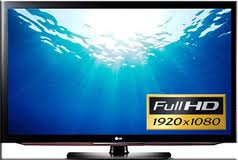What is the resolution of the TV screen
TV manufacturers indicate screen resolution or support for SD, Full HD, 4K, 8K video standards. Let us find out what all these abbreviations mean.
SD resolution, SD TV

Standard Digital Television (SD) — standard digital TV – a standard, standards-based decomposition 625/50 (576i) and 525/60 (480i). There is an analog and digital TV standard definition. SDTV but the term generally used in relation to digital television.
Analog TV is standard-definition TV, used the NTSC color encoding system, PAL and SECAM. Resolution 640×480 analog signal.
Standard definition used in digital transmission of video with a resolution of 480 (NTSC) or 576 (PAL) lines, interlaced or progressive scan. The image quality compared to analog broadcasting is better for digital transmission disappear distortion and interference inherent to analog television. Television standard definition SD is not a high-definition television. The SD is used aspect ratio format 4: 3. The improved standard HD aspect ratio (16: 9).
With a high-resolution standard TV, SD video signal uses a small bandwidth applied for broadcasting, and by a narrow stream of video data for digital transmission. The DVD is a video standard definition SD.
Standard video DVD
- 720 × 480, 704 × 480, 352 × 480, 352 × 240 pixels (NTSC)
- 720 × 576, 704 × 576, 352 × 576, 352 × 288 pixels (PAL)
Resolution SD video format
SD video or SD screen resolution, these are all resolutions that are less than HD 1280 × 720. Video resolution up to 1280×720 formats are SD.
HDTV TV resolution
High-Definition Television, HDTV, HD. Let’s just say that all video that is larger than 1280 × 720 is called high definition video. This format allows you to transfer a greater definition video signal with a resolution of:
- 720p – 1280 × 720p:
- 1080i – 1920 × 1080i or 1440 × 1080i
To send such a signal, it is necessary to use a wider bandwidth but the picture quality compared to SD looks much nicer on TV. In this format, start broadcasting satellites, as well as broadcast terrestrial digital TV standard T2 (in part).
Full HD TV resolution
Full HD — the marketing name for the first time invented by Sony in 2007. It is used in the broadcast high-definition television (HDTV) and movies recorded on Blu-Ray and HD-DVD discs. It is customary to call an image or a Full HD screen if the resolution is 1920 × 1080.
HD TV resolution
HDTV (High Definition TeleVision) — Image resolution: 1080х720. It is customary to call an image or an HD screen if the resolution is 1080 × 720.
UHD TV resolution
Ultra High Definition Television (UHDTV), Ultra HDTV, Ultra High Definition Video (UHDV)) includes 4K UHDTV (2160p) and 8K UHDTV (4320p).
4K UHDTV (2160p) resolution 3840 × 2160
8K TV resolution
8K UHDTV (4320p) resolution 7680 × 4320
In connection with the development of recording devices it has become possible to carry out shooting with such a resolution is planned that such panels will be mass produced in the years 2014-2016. Their advantage is the possibility of creating a giant TV with a diagonal of more than 5 meters and the possibility of high-quality video.
As a result, in 2016 Sharp released a 8K TV for mass sale. But only for Japan, Singapore and China.
Other TV manufacturers began selling 8K TVs only in 2019.
To record one hour of video in the 8K standard, without using codecs to compress files, you need 300GB of memory. Therefore, video format 8K is transmitted or stored in a compressed form, for this purpose various codecs are used.










You have a spelling error on your web page. You have “HDTV (High Definition TeleVision) — Image resolution: 108х720. It is customary to call an image or an HD screen if the resolution is 1080 × 720.” and the 108×720 should actually be 1080×720.
Thanks